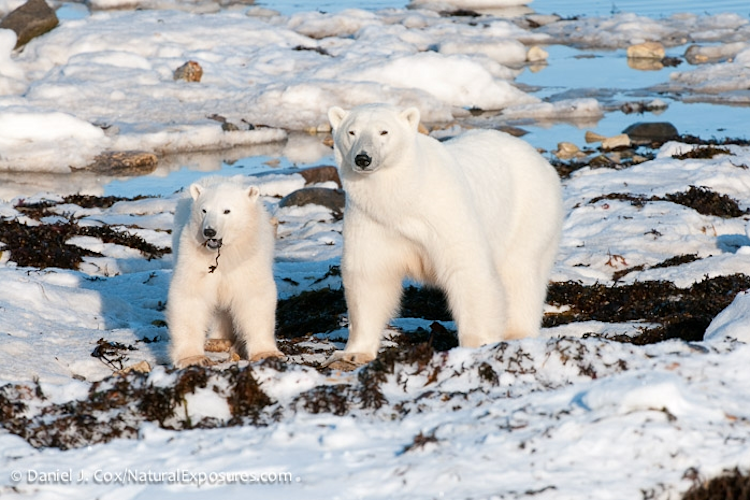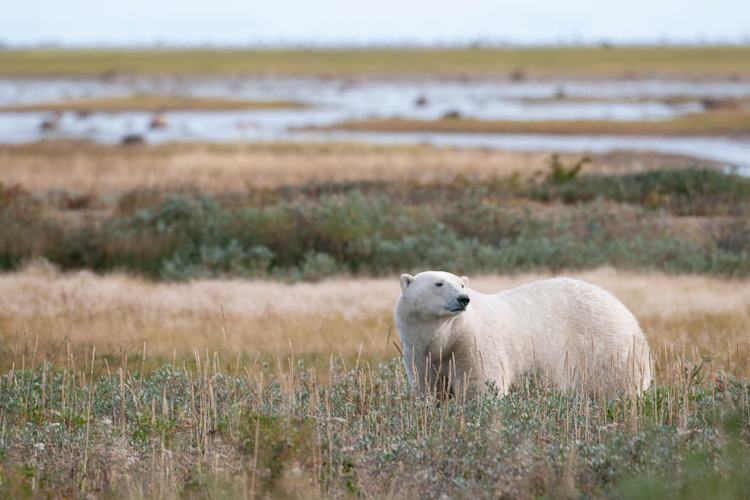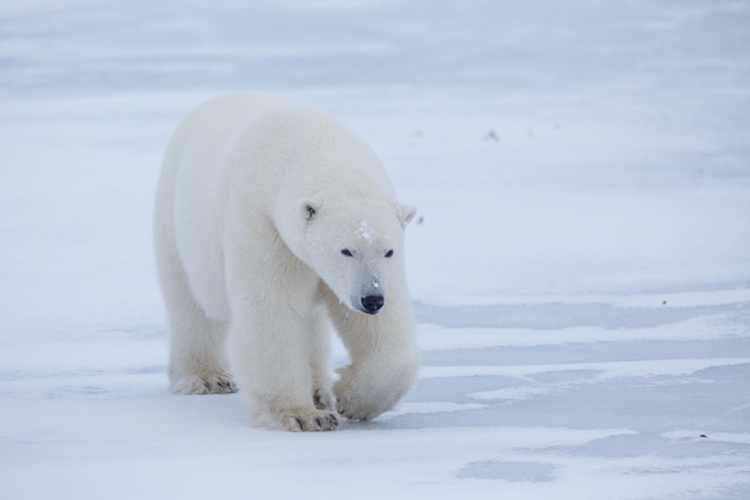Photo: Daniel J. Cox
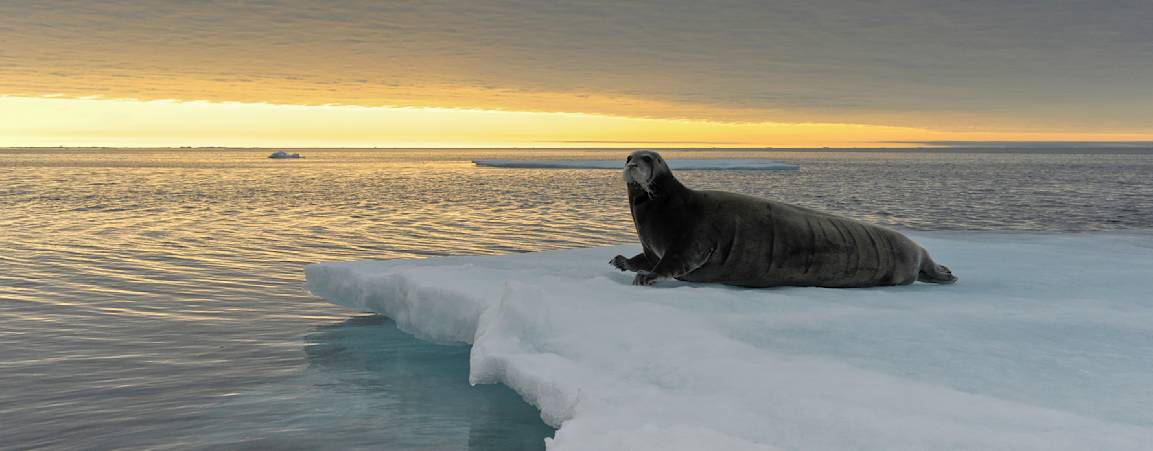
Diet & Prey
Discover why blubber-rich seals are the favorite prey of polar bears.
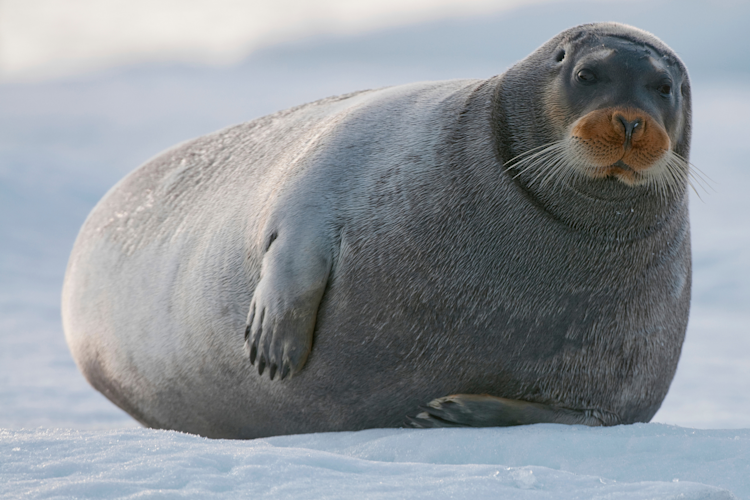
Photo: Daniel J. Cox
What do polar bears eat?
Polar bears have evolved to prey on ringed and bearded seals, which they catch from a platform of sea ice.
Polar bears depend on the high-fat content that seals provide, but will take other prey when available.
How the bears hunt seals.
In fall, a seal cuts 10 to 15 breathing holes (known as aglus by Canadian Inuit) in the ice, using the sharp claws on its fore flippers.
Seals keep their breathing holes open all winter long, even in ice up to 2 m (6 ft) thick. They surface about every 5 to 15 minutes at one of the holes or use air pockets trapped under the ice when available.
Polar bears attack by waiting for seals to breathe at the openings. They locate them with their powerful sense of smell and wait for the seals to emerge. Polar bears have to be smart and patient because the wait can be long—sometimes hours, or even days.
Bears also stalk ringed seals that are basking on ice by taking advantage of their sleep-wake rhythms.
The bear crawls slowly forward and freezes in place when the animal raises its head. At about 6 m (20 ft) from the seal, the bear uses its explosive speed to pounce, killing the seal before it can escape back into the sea.
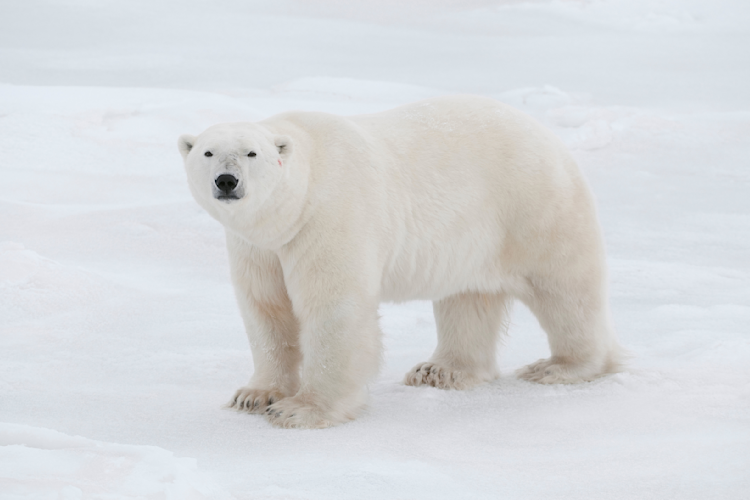
Photo: Daniel J. Cox
For a polar bear, fat is fit.
A thick layer of fat helps keep the bears warm. It also helps them survive when food is scarce. That’s why seal blubber is the perfect food for polar bears.
A polar bear can eat 45 kg (100 lbs) of seal blubber in a single sitting!
When hunting is good and polar bears are in good condition, they may eat only the seal's blubber and skin. They leave the rest for scavengers like Arctic foxes, ravens, and other bears.

Photo: Kt Miller
Spring Feasting Season
Spring time is the feasting season for polar bears, the time of year when seal pups are born on the sea ice, making easy prey.
During this period, polar bears pack on the calories, building up their fat reserves for leaner times ahead.
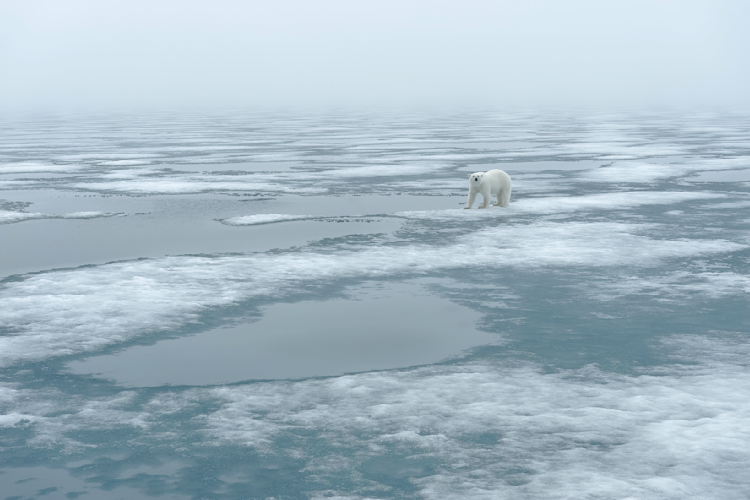
Photo: Daniel J. Cox
They need a platform of ice.
A polar bear’s hunting and eating patterns depend completely on sea ice.
Why? Because polar bears rely on the ice to reach their seal prey.
But as the Arctic continues to warm and the sea ice retreats, polar bears are facing longer ice-free periods and longer fasts, straining the limits of their fat reserves.
Could polar bears switch to eating other foods?
Polar bears have evolved to prey on seals. But they are curious and will eat other foods when available — including geese, bird eggs, whales that wash up on the beach, and even the occasional small mammal.
All of these foods are less predictable, however. And most of them, except whales or walruses, don’t provide enough calories to sustain the polar bear’s massive body size or build up the bear’s fat reserves.
While individual bears may benefit from eating these foods, they would not provide enough calories, in the right form, to sustain polar bears at the population level.
Latest News
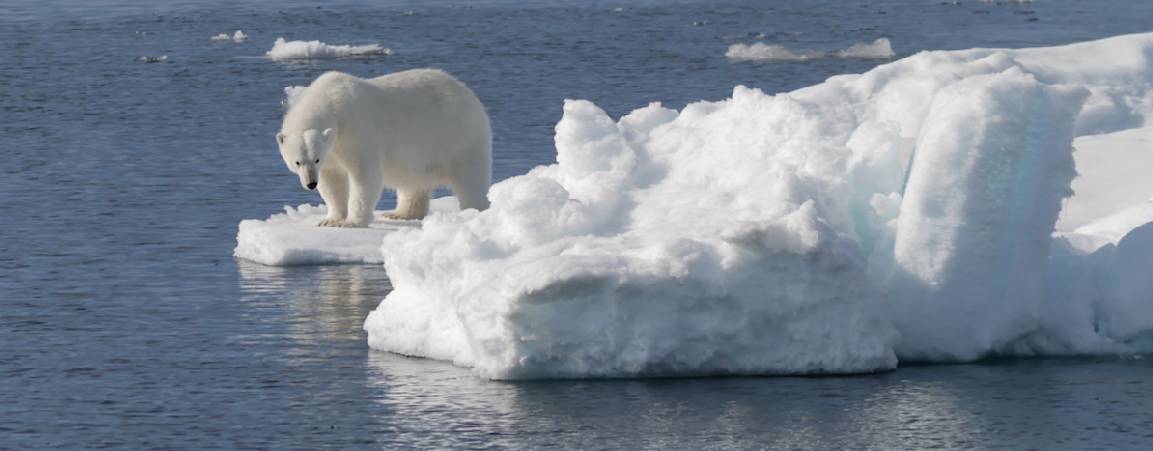
Feeling inspired?
Join us in our efforts to encourage leaders to make a swift transition away from fossil fuels and to renewable energy sources, by spreading awareness about the real and pressing threat of climate warming.
